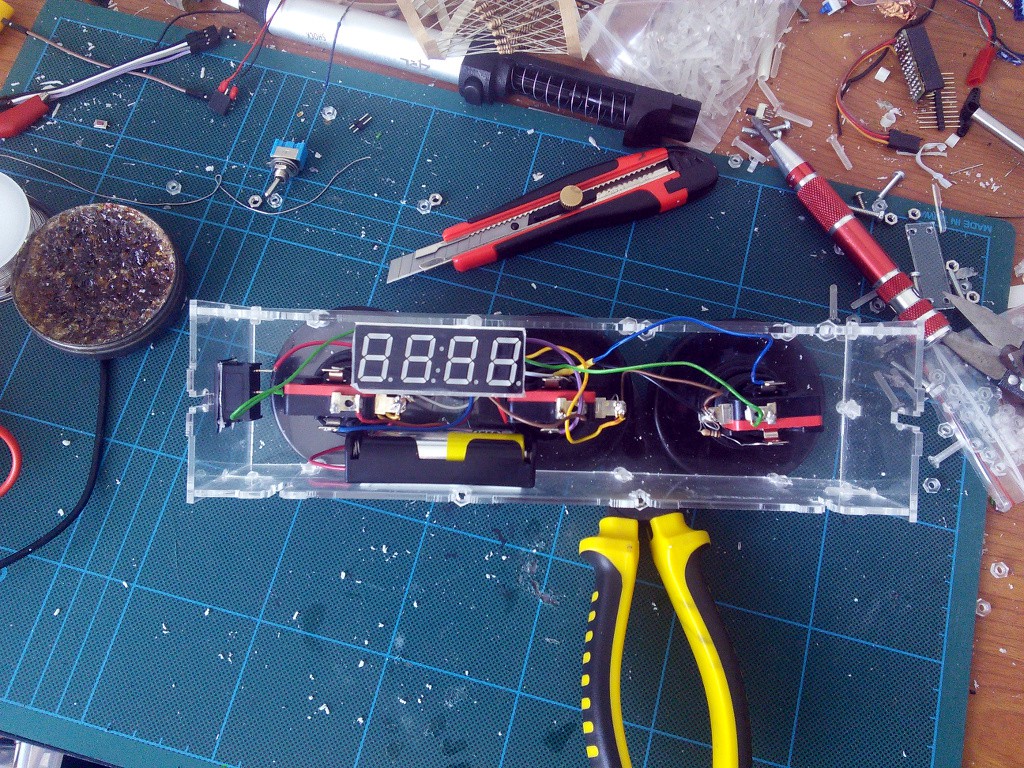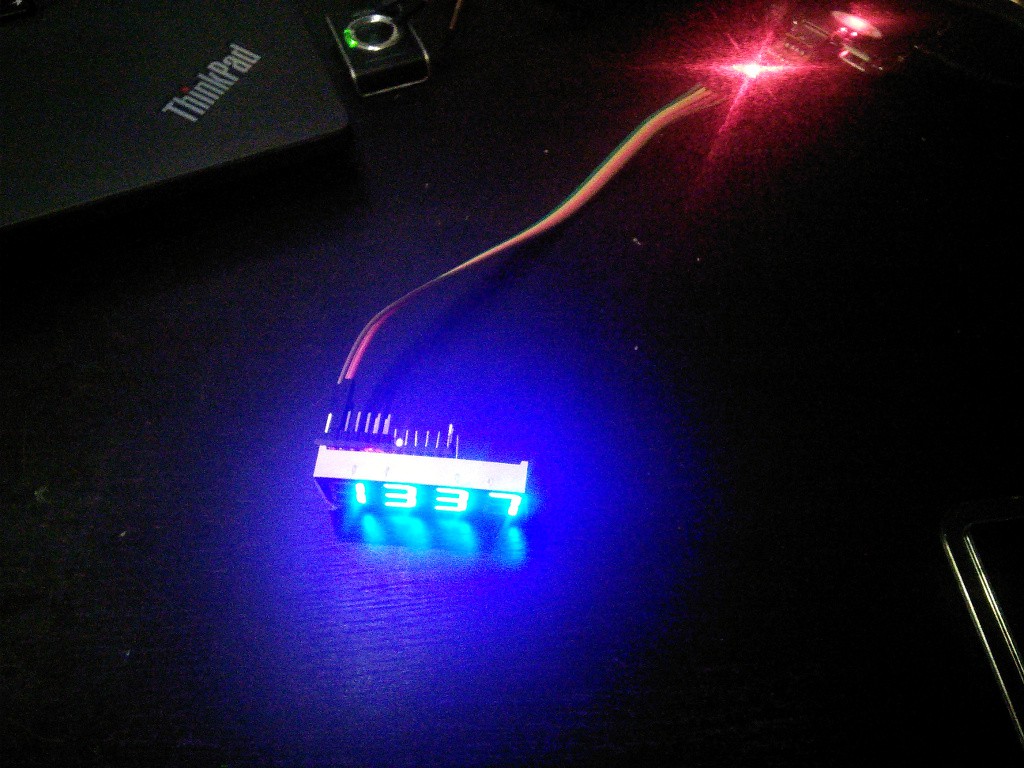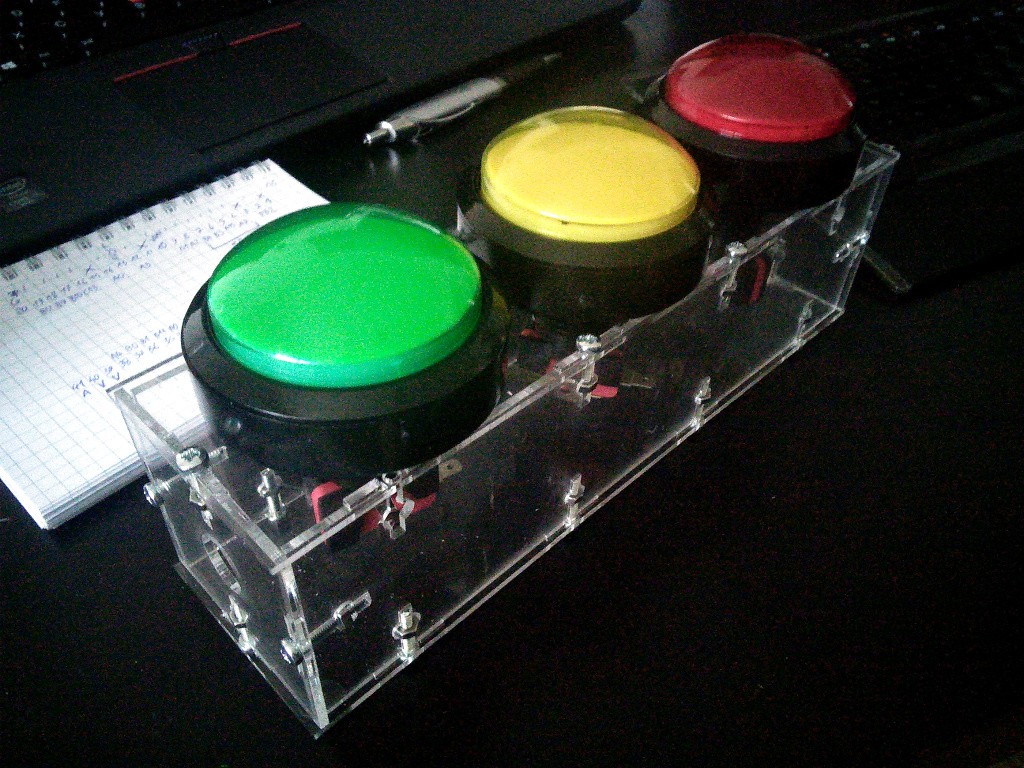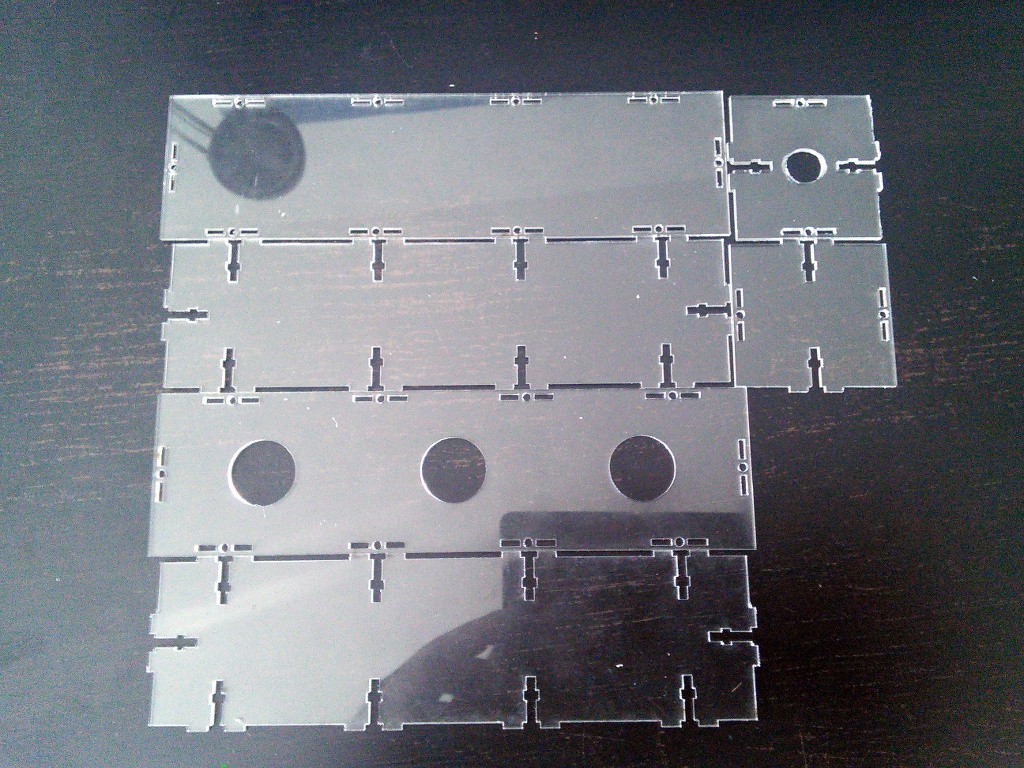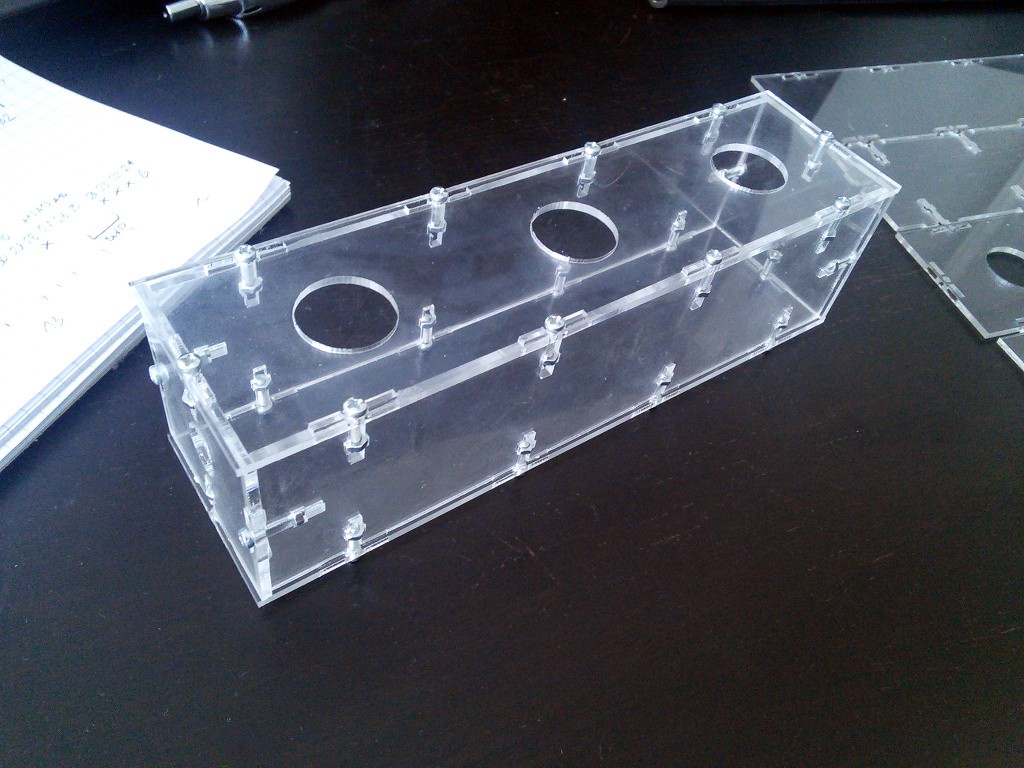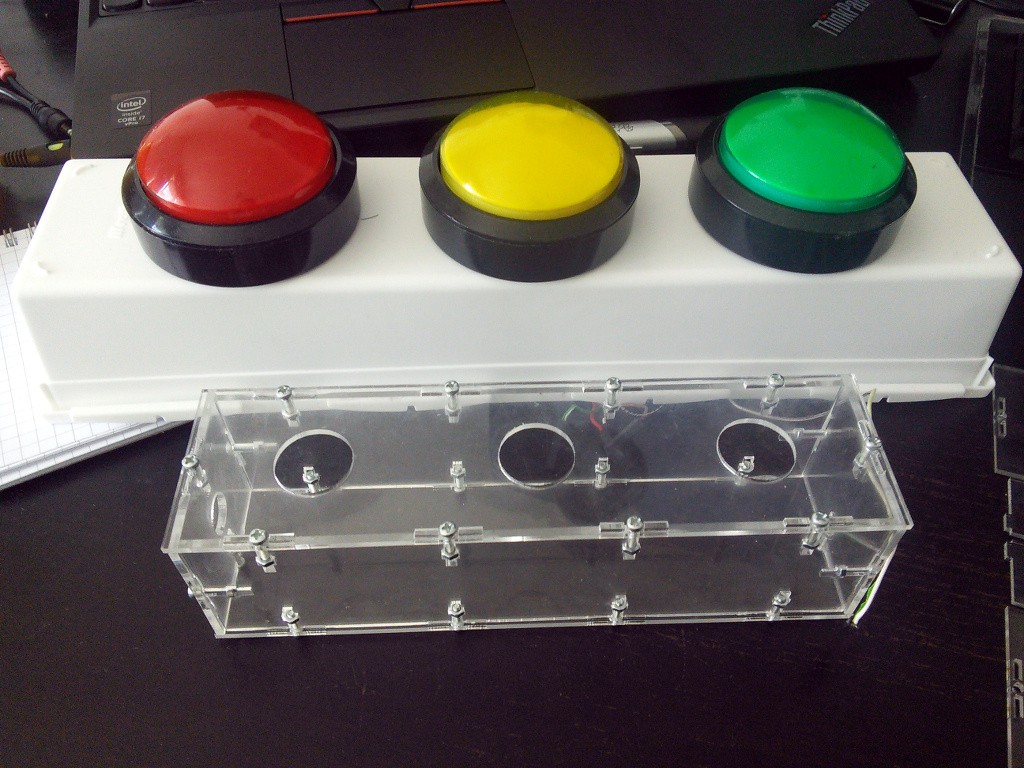This is a talk voting machine. It doesn't do much, just records the button presses. You put it next to the exit from a room in which a conference talk was taking place, and people press the buttons while passing next to it. Green button means they liked the talk very much, yellow means the talk was fine but not that great, and red means they think they wasted their time. The votes get compared with how the committee selected the talks. Next year the process can be better.
The machine has three buttons, red, yellow, and green, and it counts how many times each of them has been pressed. A small button on the side lets you display each of the counters on the 7-segment display on the bottom. To reset the counters, switch the machine off.
 deʃhipu
deʃhipu